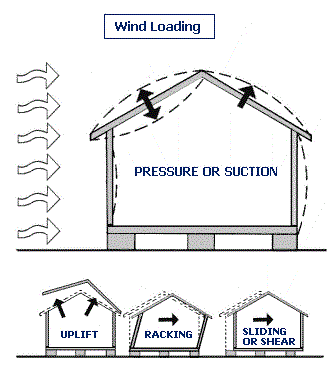


Another common classification for external forces labels them axial, eccentric, and torsional.A beam supported on a girder, for example, may be considered, for all practical purposes, a concentrated load on the girder. Concentrated loads are forces that have such a small contact area as to be negligible compared with the entire surface area of the supporting member.Dead weight of a rolled-steel I beam is a good example. Uniformly distributed loads are forces that are, or for practical purposes may be considered, constant over a surface area of the supporting member.External forces may also be classified as distributed and concentrated.An example is the dropping of a heavy weight on a floor slab, or the shock wave from an explosion striking the walls and roof of a building. Impact loads are forces that require a structure or its components to absorb energy in a short interval of time.Repeated loads are forces that are applied a number of times, causing a variation in the magnitude, and sometimes also in the sense, of the internal forces.One example is the weight, or dead load, of a floor or roof system.Static loads are forces that are applied slowly and then remain nearly constant.In one classification, they may be considered as static or dynamic. External loads on a structure may be classified in several different ways.


 0 kommentar(er)
0 kommentar(er)
